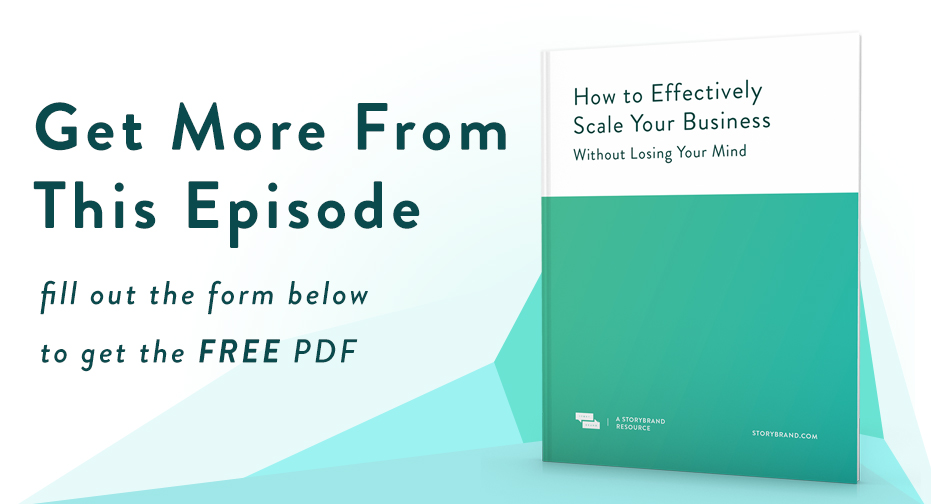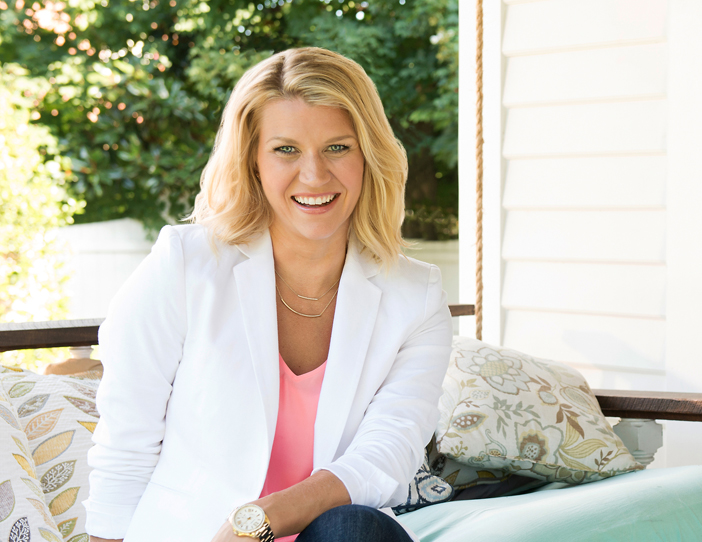
Episode Description
I don’t know a lot of business leaders who wake up and think, “Yeah, I’d like to keep my business exactly the same today!”
No, we got into this thing because we love seeing our businesses grow. When they do, it means our customers are overcoming a painful problem. It means our employees are thriving. It means we get the satisfaction of knowing that the big idea we took a risk on is really paying off.
But growing a business comes with a lot of pitfalls, both professional and personal.
Our podcast guest today, Chalene Johnson, has seen pretty much everything you can see as an entrepreneur. She is a lifestyle and business expert, motivational speaker, and founder of the SmartLife movement. She and her husband/business partner have scaled up and sold several lifestyle companies. And she keeps reaching new levels of success — not just for her businesses, but also for herself and her family.
So I’m honored she’s joining us on the Building a Story Brand podcast this week to share her wisdom.
If you want to scale your business the right way, without compromising your values or going off the deep end, don’t miss this episode. Chalene is going to show us the five things we need to remember if we’re going to get from where we are to where we want to be.
Have clarity on how big you want your business to be.
A lot of driven people are just driven. Period. Not driven toward a purpose. They achieve for achievement’s sake. They say they’re going to scale their business to 5 million dollars. Then, they get there and think, Oh, we can totally go to 10 million! Before they know it, they’ve got a $50 million business and no life.
That’s why Chalene’s first bit of advice for growing a business is to know how big you want it to be and what point is too much.
You could approach this by the numbers: At what point do you have too many employees? How many hours are too many to work each week? How much revenue is enough?
“We often times go after things that don’t lead us to a purpose-driven life. Recognize that you have the right to live a life that feels good, that feels happy, that feels right for you.”
But Chalene recommends you dig deeper. What do you want life to look like? Know what feels good and seek boundaries for your business that will allow you to be truly happy. This is a measure only you can know. Here’s what she told me:
“We often times go after things that don’t lead us to a purpose-driven life. Recognize that you have the right to live a life that feels good, that feels happy, that feels right for you.”
True up your motivations before you pursue growth in earnest. That way, you won’t fall into the trap of pursuing growth for growth’s sake and forget about having a sustainable, meaningful life both in and outside of work.
Scale your business with your existing customers, not new ones.
At StoryBrand, we often say that the key to doubling your revenue is probably through your existing customers.
And Chalene has seen the same strategy to hold true.
Finding new and better ways to serve our existing customers is more effective than figuring out “the next big thing” or targeting a new customer base.
Finding new and better ways to serve our existing customers is more effective than figuring out “the next big thing” or targeting a new customer base.
Finding new and better ways to serve our existing customers is more effective than figuring out “the next big thing” or targeting a new customer base. Why? Because you’ve already established trust with your current customers, and trust is critical for selling.
Chalene recommends you create a product line that follows the journey of your customer. Here’s her experience:
“What has allowed us to enjoy greater success, and earn more money, and work less is realizing that we didn’t need to create things out of the blue, and hope that people would want to buy them.
Instead, I just started taking care of a group of people. I started realizing these people are on a journey very similar to mine, and I’ve got to go way, way back to what I needed when I first started.”
She gives the example of a client who sold a course about how to produce and edit high-end videos. Going “back to basics” for this client meant designing a course on how to create high-quality videos on a beginner’s budget, using just the equipment you have.
Consider all the points of your typical customers’ journey, and design products for every step of the way. As Chalene says, “It’s easier for them, it’s easier for you, and you’re going to make more money.”
Let your customers tell you what they want.
If you don’t know how to figure out what that customer journey looks like or what they need, don’t worry.
Your customers really want to tell you.
And it’s critical that you listen to them. As Chalene pointed out:
“Often, we feel like we know what our customers need. But the language of what we feel like they need and what they sense they want don’t always match up. We know what they need but you have to speak in terms of what they want.”
A couple years ago, Chalene was considering offering a course about how to sell products on camera. So she hosted a small focus group on Facebook to see what her customers thought. She asked, “What would be of greater interest to you?” and gave people four options:
• Learning how to sell on camera
• Understanding how to better help people
• Getting people to take action
• Learning how to serve and not have to sell
All those options were getting at the same basic need: how to sell on camera. But the overwhelming desire from her customers was for the last option, learning how to serve, not sell.
With this feedback, Chalene discovered the language her customers used to express that need. While she recognized the need, her customers didn’t “want” to know how to sell. If she’d marketed the course that way, it would have flopped.
Another way to discover this for your customers is to go to where they comment and listen. Where are they struggling? What words do they use to describe those struggles? If you see a trend, you’ve got a foundation for your next product or program.
Never create something in a test tube.
You can’t create products in isolation from your customers and expect to grow your business.
As you develop your next offerings, get feedback from your customers. Don’t hide your big ideas from your customers for six months and then launch it as a surprise.
Instead, involve your customers from the start. Thanks to social media, this is easier than ever. Here’s Chalene’s blueprint:
• Start with your product idea
• Come up with a couple of names (but don’t get too attached to them)
• Loosely sketch out the big idea and value behind the product
• Ask customers for their thoughts (Chalene uses Facebook to do this)
• Listen! They’ll tell you what it should be named, how it should be priced, and what they want from it
Chalene has seen a lot of success by using private Facebook groups. She puts together a small group of people she trusts and asks for feedback on her big idea. The exclusivity of the group goes a long way toward motivating people to freely share their ideas.
You are (usually) your customer.
This isn’t true all the time, of course. But for many of us, we’re a lot like the people we serve. We have struggled with the same problems. And because we’ve overcome them, we have the authority to run a business.
But don’t mistake being an authority for being perfect. Your customers can learn from your struggles, too. I loved Chalene’s analogy:
“I like to think of myself as a person who is willing to go out front with a flashlight and trip on a few things, because I’ve got a group of people right behind me, and I can jump up after falling and say, ‘Hey. Look out, there’s a boulder over here.’”
No matter where you are in your journey, never lose sight of where your customers are on the path. It will make you more empathetic, more trustworthy, and ultimately more successful.
—
The overarching theme to Chalene’s advice is to create a business that’s built around serving your customers and protect your own happiness while you do.
That’s a pretty amazing version of growing a business, because yes, it’ll grow your revenue, but it will also help you and your customers grow. If you need a work-life balance check, I highly recommend you check out the full episode.

Answer a few short questions on our downloadable worksheet and apply this episode to your life and business. You’ll remember more of what you learned and have clarity for how to put it to use right away.
Executive producer: Tim Schurrer
Additional production and editing: Chad Snavely









